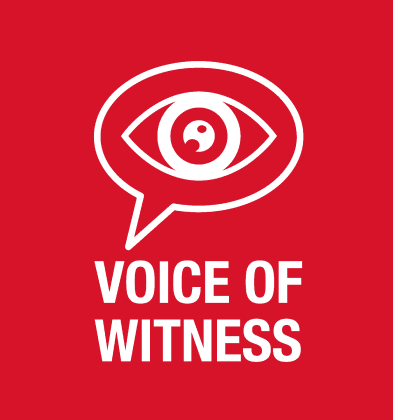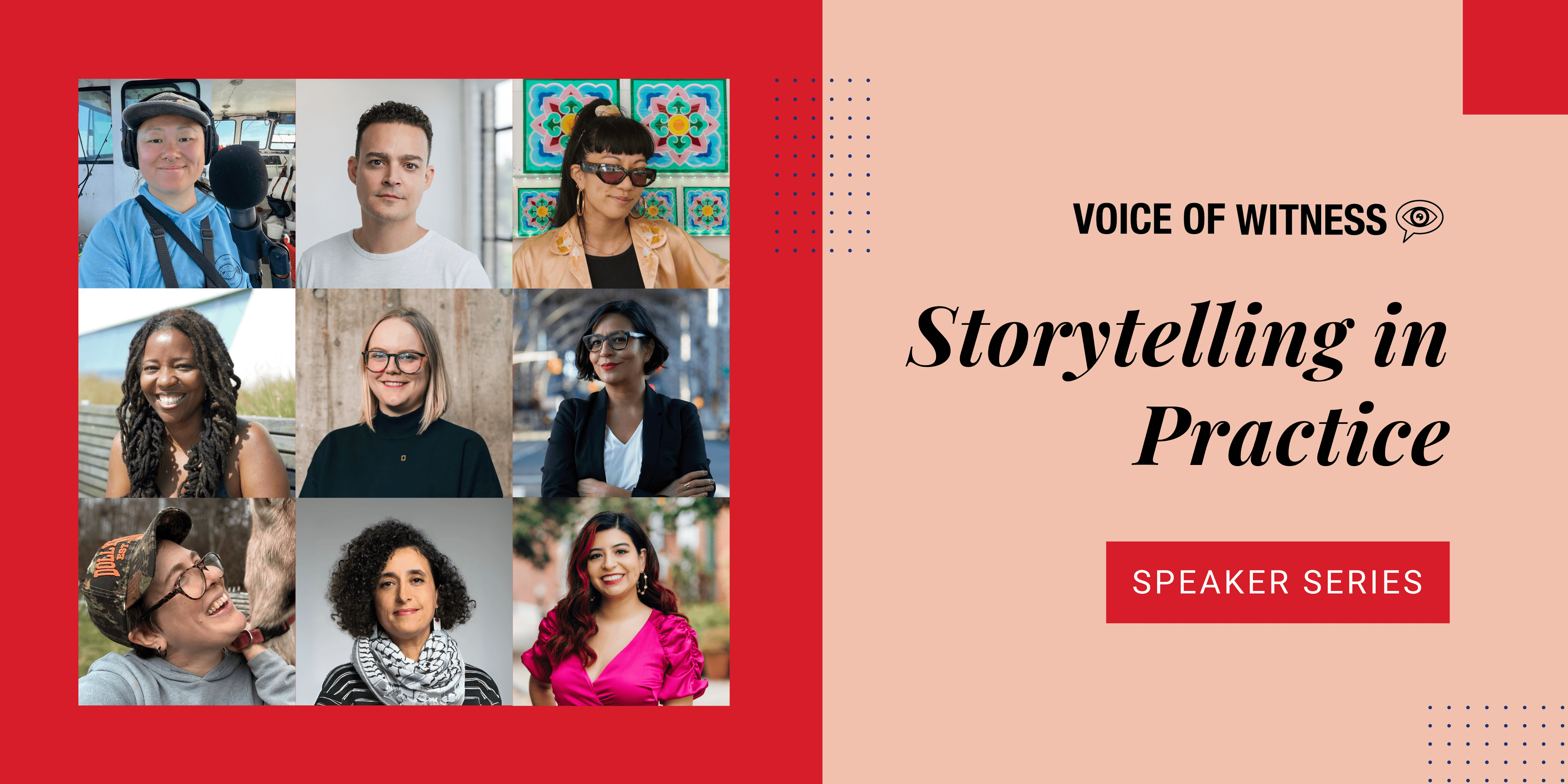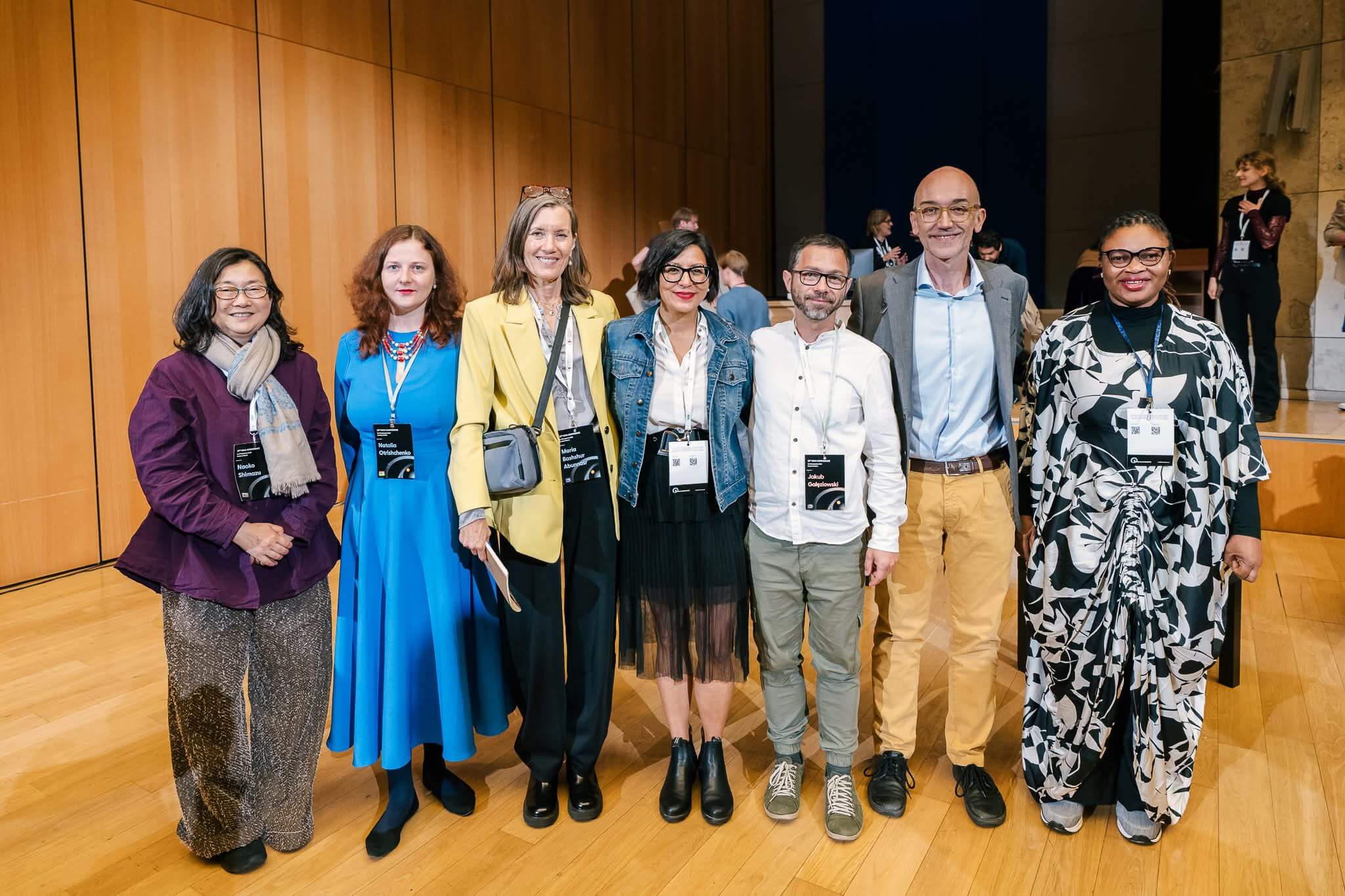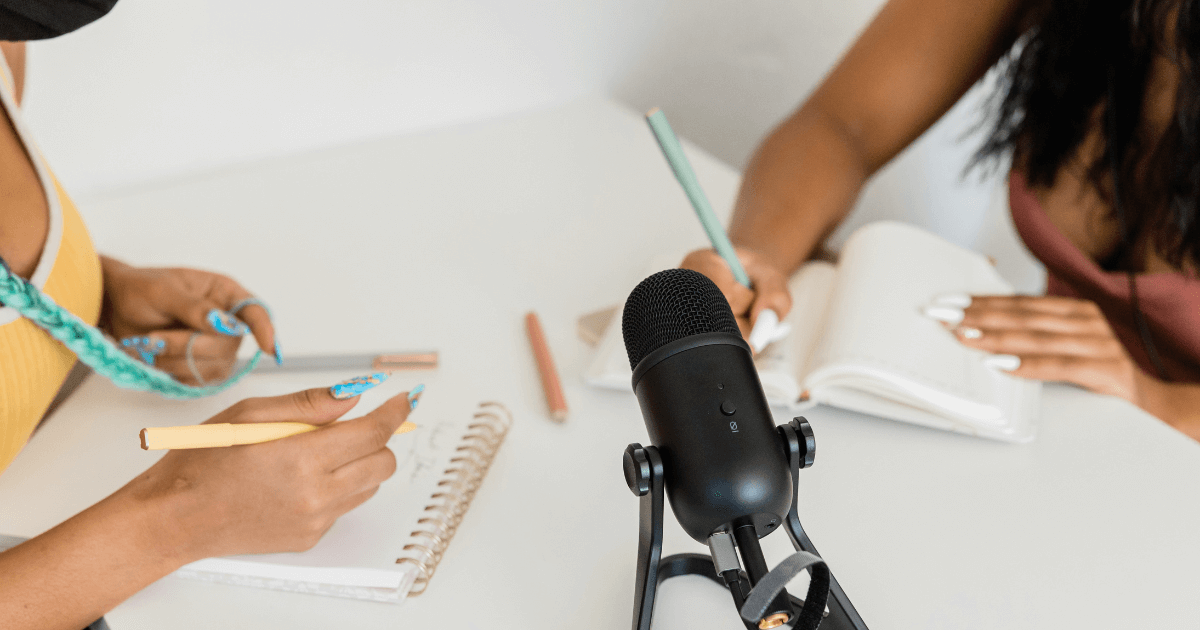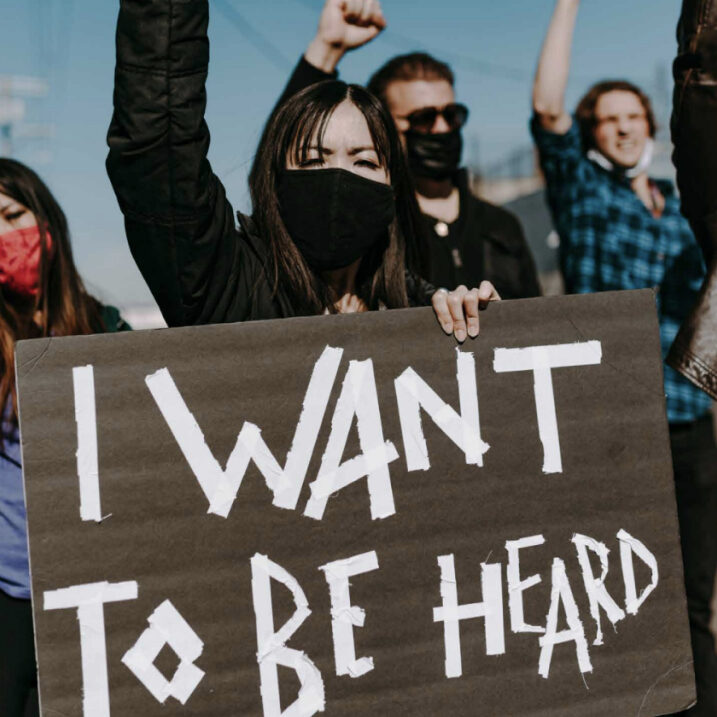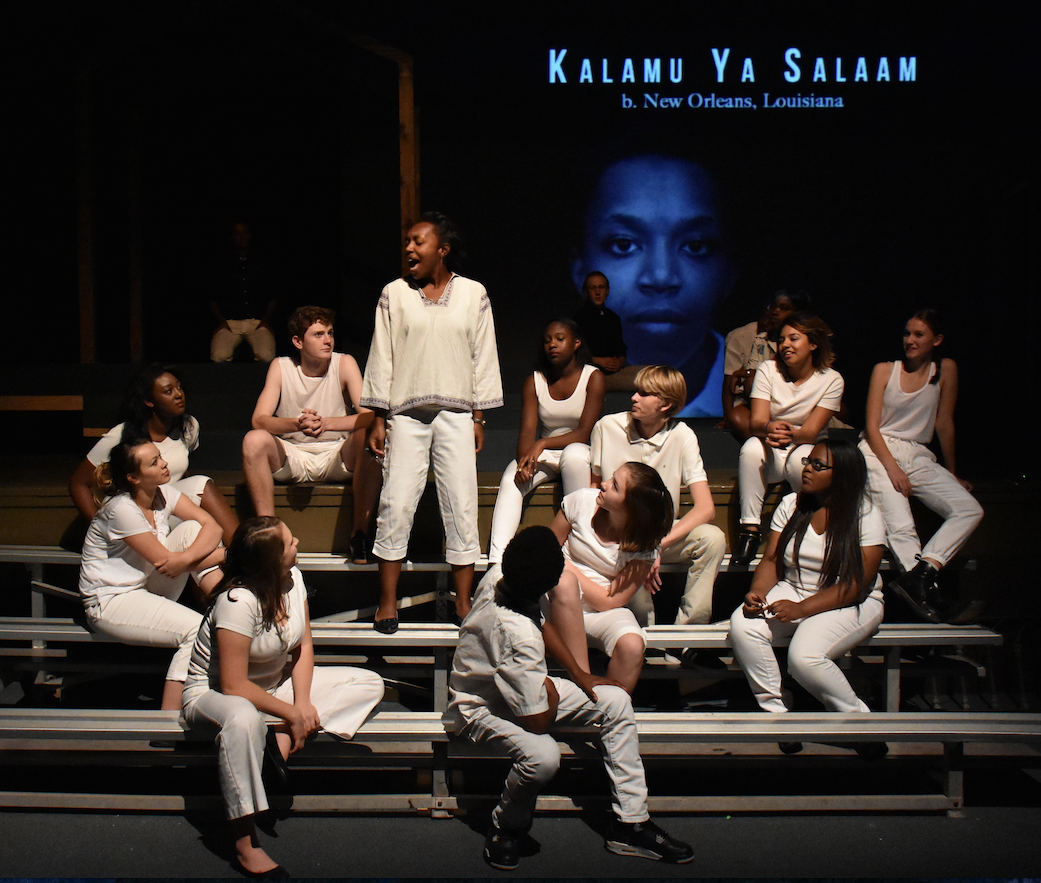
Students from Oakland Technical High School performing a theatrical adaptation of Voices from the Storm in November of 2015.
At the core of our mission, we believe in the power of the story to change hearts and minds. Stories open our eyes to new cultures and ideas, break down barriers, and foster empathy. As much as storytelling can be an agent of change, it is also an art that must be approached mindfully to unleash its full potential. That is especially true for oral history.
As William and Richard Ayers describe in The Power of the Story: The Voice of Witness Teacher’s Guide to Oral History:
Oral History is the poetry of the everyday, the literature of the streets, the subjective experiences and personal perspectives of the extraordinary ordinary people – not a substitute but an essential piece of any accurate record of human events.
Oral history rests in the fine space between history and anthropology, happening and narrative, fact and meaning, past and present, remembering and forgetting, interviewer and narrator.
Oral history can exist in many forms: from literature, to podcasts, to plays, video, photography or painting.
In honor of National Arts in Education Week, we wanted to share insight into the core elements of the art of oral history:
Curiosity and Inquiry
Oral history is unique in that it is propelled by questions instead of answers. Generating inclusive, open-ended interview questions that narrators can respond to with detailed, personal experiences not only makes for a successful interview, but also reflects the oral history “fundamental” of honoring individuals.
The right questions will show the narrator your genuine interest in their story and create a more personal experience in the interview process. Famed oral historian Allesandro Portelli described this as a “mutual sighting” between narrator and interviewer.
Listening
In addition to crafting thoughtful, informed questions, one must also be nimble during the interview, letting the story take its own form. As Joell Hallowell from Underground America: Narratives of Undocumented Lives describes:
I feel that attentive listening is by far the most important skill in conducting oral histories, and it doesn’t necessarily come naturally to most of us. It’s very easy to get ahead of your narrator and to lose attention as you get ready to ask new questions or shift focus…In normal conversations we are accustomed to breaking in with our own opinions and experiences, but in the course of an oral history I’ve found that I need to stay completely focused on my interviewee, to stay on the same wavelength and be ready to follow-up at every turn. That requires some serious listening skills.
Shaping Narratives:
Editing oral history is where commitment to accuracy in retelling someone else’s story and creating a readable, compelling narrative becomes technical. One must determine what is at the heart of the story and make difficult cuts to compelling parts that do not fit into the core narrative.
Editing is both an objective exercise and a subjective one. Oral history seeks to preserve the narrator’s voice while formulating a compelling story. But editors do not actually tell the story, they facilitate it.
When editing an oral history, remember the basics of creating a good story: chronology, style, interesting characters, exciting events, and emotion. Make sure that the narrator’s “voice” is never lost or compromised: edit your transcript so the narrative has a clear beginning, middle and end, and try to strike a balance between preserving the voice of the narrator and correcting any grammatical errors that may distract from the telling of the story.
For more information and resources on Oral History, download a free copy of our handbook.
